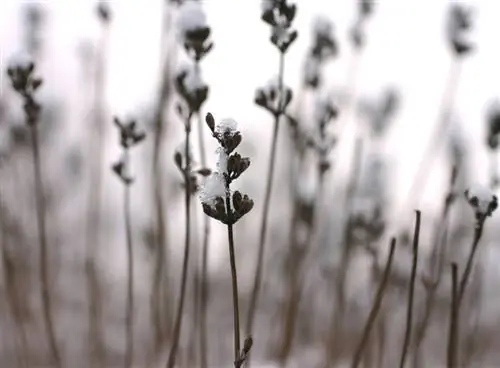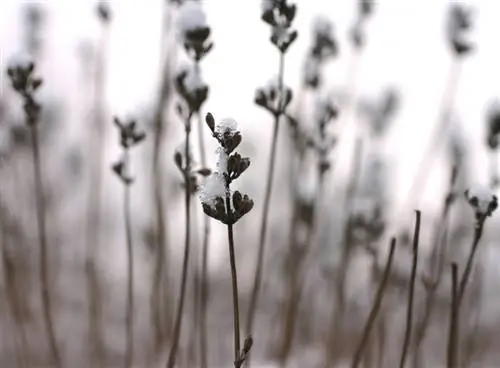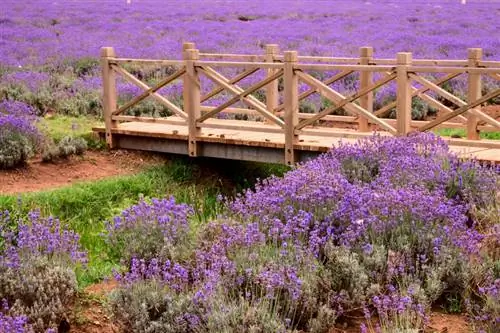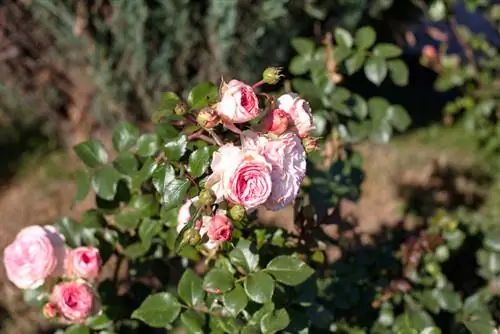- Author admin [email protected].
- Public 2023-12-16 16:46.
- Last modified 2025-01-23 11:20.
Lavender is actually considered a fairly easy-care plant, after all it needs a lot of fertilizer and water and is particularly demanding when it comes to the soil. However, that is only half the truth, because with incorrect care measures and a location that is too cold, the lavender is quickly overwhelmed and dies. Here we list the most important reasons why your plant doesn't want to thrive.

Why is my lavender showing signs of deterioration?
Lavender often dies due to waterlogging, pots that are too small, incorrect fertilization or an unsuitable location. To ensure the well-being of the plant, you should ensure sufficient sunlight, well-drained soil and sparing fertilization.
It is essential to avoid wetness or excessive humidity
If your lavender plants are turning brown from the bottom up and the leaves are drooping, then in most cases too much moisture is to blame. In this case, you should first dig up the affected plants or take them out of the pot and examine the roots. Wetness often causes the roots of lavender to rot and the plant to eventually die. If the rotting process has already begun, cut away the affected root parts of the lavender and pot the plant in fresh soil. However, be careful not to damage the taproot.
Potted lavender needs large containers
Pots that are too small can also cause the lavender to gradually shrink. Balcony boxes and similar containers are not suitable for Mediterranean plants because the flat boxes in particular store far too much water - waterlogging forms, which in turn leads to root rot. Deep pots are also necessary because lavender develops quite long and branched roots.
Fertilize little and especially use nitrogen fertilizer
Fertilize in moderation. Especially if you combine lavender with more high-maintenance plants such as roses, it often dies due to over-fertilization. At the beginning, over-fertilized lavender “shoots up,” as the gardener says, which is usually due to too high a nitrogen concentration in the fertilizer. After two or three years at the latest, the plants that initially seemed to be growing so well simply die. Caution is also advised with natural fertilizers: both stable manure and horn shavings are rich in nitrogen and should therefore only be used extremely sparingly (or not at all in the case of horn shavings).
Tips & Tricks
Lavender needs a location with as much sun as possible, where it can actually be in the sun all day long. However, there are also some (few) varieties that can thrive in partial shade, including: the white lavender.






